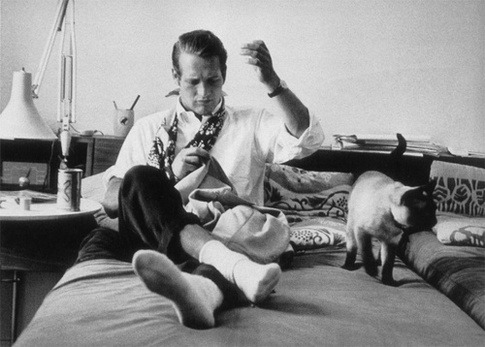
Knowing how to properly sew on a button is perhaps one of the most useful clothes-related skills you can pick up. Buttons occasionally fall off even the best of garments, and need replacing, or sometimes we wish to swap out the manufacturer’s buttons for something else. A mid-tier cardigan, for example, can be made much better looking if you change out the plastic buttons for some horn ones.
There are many good instructional guides online that’ll show you how to sew on a button. I like these by Nicola Donati and Savile Row tailor Matthew Farnes. Valet also has a nice “toothpick trick” for coats. The things you’ll need before practicing with these guides are quite basic: some button thread, a sewing needle, some scissors, and, of course, your new buttons. You may also want to have a seam ripper to take off your old buttons, and a thimble if you’re trying to sew through tough cloth. All these things should be available at your local supermarket for two or three bucks each. Once you have what you need, it takes about ten minutes to learn how to sew on your first button, and maybe a few tries before you get the technique down.
As to where you can score some nice buttons, I recommend Britex if you’re in San Francisco. They hold sales twice a year, which you can find out about by signing up for their newsletter in-store. In Los Angeles, there’s B. Black & Sons, and in New York City there’s Tender Buttons (arguably the most famous button store in America). For online sources, you can turn to Isles Textile Group, Hwa Seng Textile, and MJ Trimming. I personally prefer buying things in a brick-and-mortar store, especially with things that can have so much visual variation such as horn or mother-of-pearl buttons, but if you don’t have a good button store near you, you still have options.
For something truly affordable, try checking thrift stores. Something made by a reputable company such as Oxxford, for example, might be damaged and can be had for under $20. These will have all the manufacturer’s original buttons, which should be made from high-quality horn or metal. A smart way to pick up nice buttons for a fraction of the cost you’d spend otherwise.







